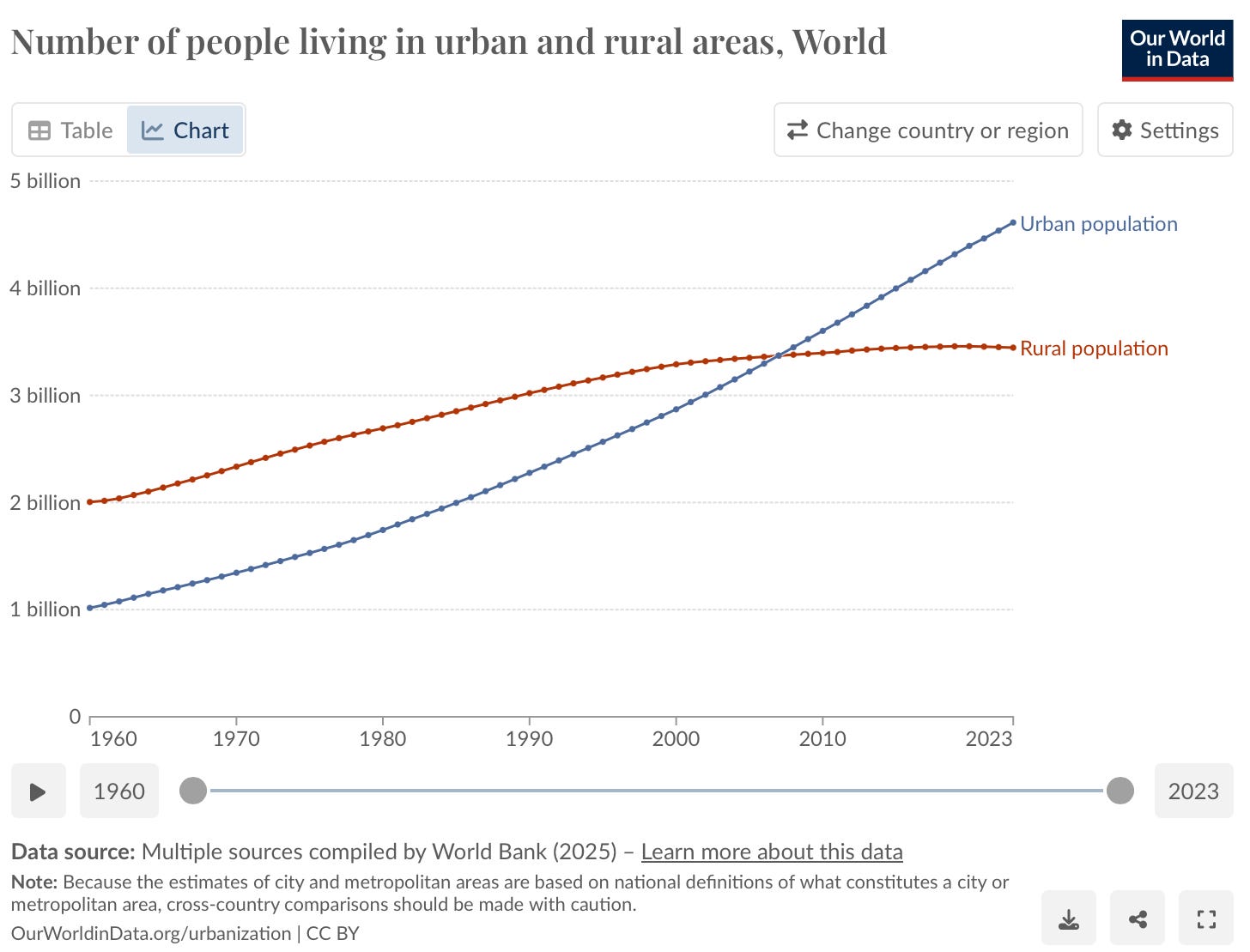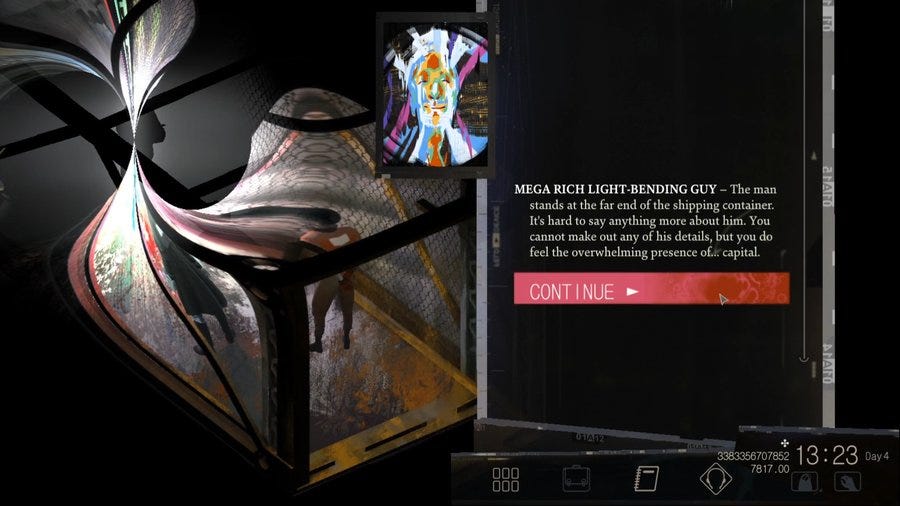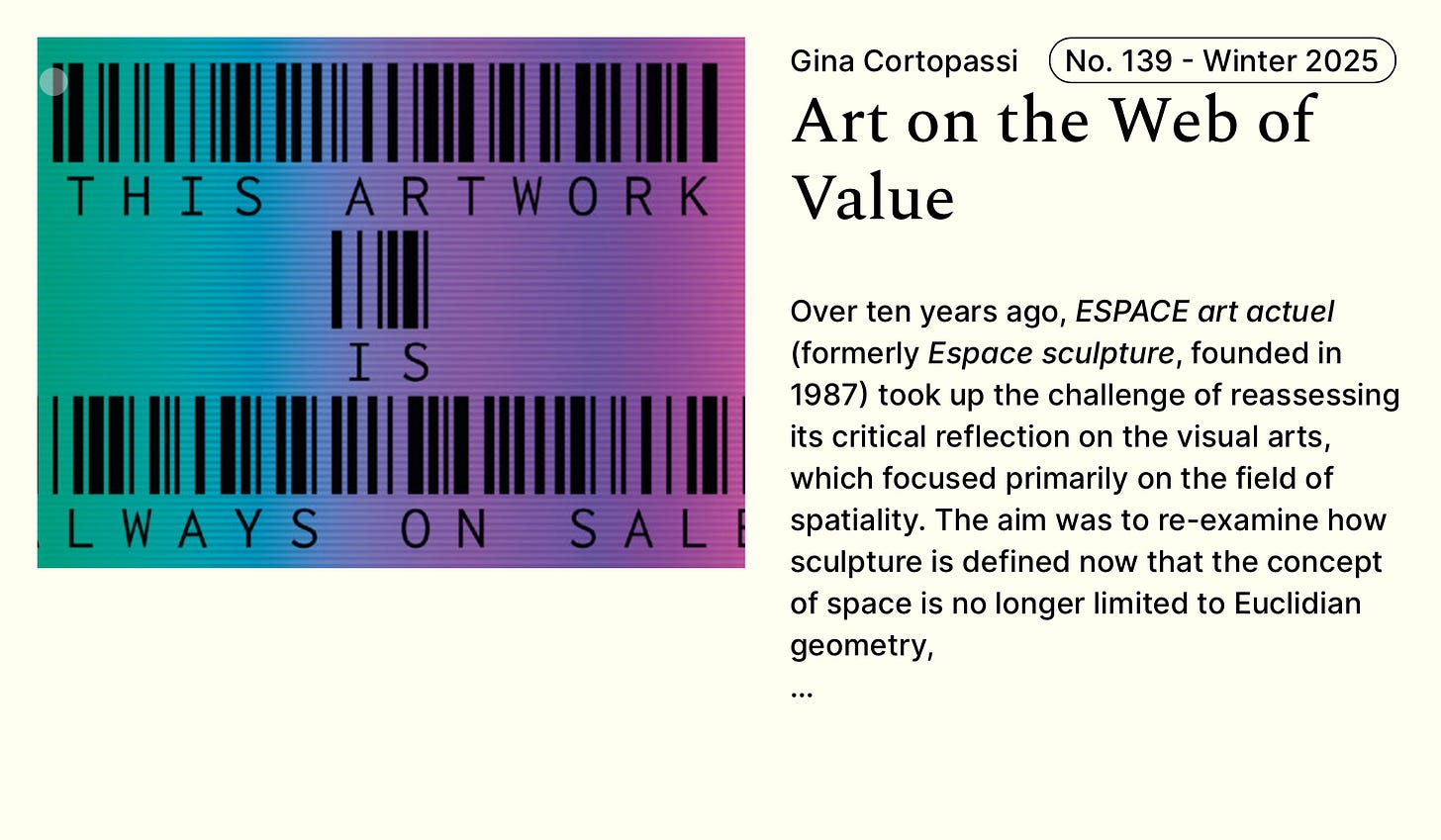Post-Modernity in Fast Networked Cities and Slow Physical Worlds
The fast and slow worlds of 2700
Two articles stuck with me this week.
take on the defence on slowness at the end of the world and ’s revised take on modernity.Like many, Sarah tries to reconcile living through realisations of what AI changes about our world alongside a desire to live slower.
Since learning of the coming AI revolution, I’ve lived in two worlds. One moves at a leisurely pace, the same way it has all my life. In this world, I am safely nestled in the comfort of indefinite time. It’s ok to let the odd day slip idly by because there are always more.
The second moves exponentially faster. Its shelf-life is measured in a single-digit number of years. Its inhabitants are the Situationally Aware; the engineers and prophets of imminent AI transformation. To live in this world is to possess what Ezra Klein calls “an altered sense of time and consequence”.
There’s an accelerated reality that one can inhabit that is increasingly at odds with the slower bitrate of pre-AI, pre-mega-algorithmic, life. Once you’re inside that perspective, it can feel overwhelming at times:
This attitude can colour the way you perceive the whole world. It can make everyone – teenagers on their way to school, business people on their rush-hour commute, joggers on a morning run – appear to you like swimmers battling hopelessly against a tsunami they cannot see, their labour fruitless, misguided and tragic. It can make you feel sorry for them. This is an attitude towards the rest of the world that I want to avoid at all costs.
It thus still begs the question: how *do* we live in such times when in certain situations we have to jump into the fast life out of necessity? The reality is, this trend has been ongoing for decades. The more connected and industrialized the world becomes, the more it densifies its opportunities. In 1950, less than a third of humanity live in urban areas. Around 2007/2008, the split became even and it’s been continuing ever since.
In the highest developed countries, it’s already as high as 81% urbanised. The “city” *is* the fast life. This closeness to density of capitalism, information, and networks created most of the new wealth we see today. To merely be in proximity to it created opportunities. Today, this trend continues. New services start in cities. In the past, it was Uber, today, it’s Waymo’s self-driving cars. Dating apps are more abundant and bountiful in cities. Art, music, fashion, culture. It’s all from the fast cities. A key part of this revolution is the smartphone and its ability to become aware of the physical reality around it. A smartphone inside a city is more capable than a smartphone outside of a city.
Cities are thus inverse gravity wells for our lives. It’s almost as if, the more information is embedded in a hyperlayer around a physical area, the more the physical world is sucked out of it, creating a gravitational imbalance.
The slow world, the rural world, is heavy with physical reality. You’re closer to a deeper well. The inverse are cities: shallower physical wells where digital reality has taken primacy over its physical reality. And due to relativity, if you are in the slow, physical heavy world, the city moves at an immensely and unfathomably fast pace. If you are in the city, the slow world moves even slower. So unfathomably quiet, slow, and heavy with time, space, and stars. From the slow world, we only really get a glimpse of the fast city when we use our smartphones as portals, either for remote work: exporting its fast wealth to the slower world, and/or getting access to information. One might argue that digital nomadism and remote working had weakened the fast city, but the inverse is actually truer. Digital nomads are not that attached to their physical location as much as they are still attached to their digital world. The pop-up city citizens and global traveling crypto bourgeois are examples of situations where cities have actually started to ideologically merge, becoming substrates for physical connection. The city is one of the many rooms these denizens inhabit, not *the* room. They hop from Discord to Paris. From Telegram to Brooklyn. From Twitter/X to Cape Town.
Using the blockchain, the digital world grew the ability to grow scarcity and record-keeping. Many NFTs, for example, never even see the physical world anymore. In turn, the pace of life increased. A long-running agreed narrative in the crypto industry is the perception of “crypto years”: the pervasive feeling of just how much “life” happens in a short timespan. “I’ve been coding for 5 years, but in crypto years, feels like 15” is a common saying. It’s why memecoins often *feel* so off-base for those living in a slower world. Surely, it’s a scam when something grows to a few hundred million dollars in value in a day? In the slow world, it looks absurd, flashes of singularity-like explosions. And that can be incredibly jarring. Many in the previous decades might have resented having to move the city, the fast life to make some big bucks and go home back to their slower world. But now, fortunes are made and lost at scales previously thought unimaginable. If you pay attention in the fast cities at the right time, you can retire in the slow world (not an endorsement of presidential memecoins, pls 😅).
It’s reminiscent of the mega rich light-bending guy that you encounter in a container in Disco Elysium. So rich that it breaks reality and mere proximity to him makes you richer (until you move away again).
AI LLMs suck even more of the physical world out of reality. What once took a city block to do, could now be done on a small chip. From VGR’s piece:
The rise of AI is perhaps best understood as a working-class positive singularity, as centuries of accumulated technocratic knowledge, in one fell swoop, is gifted to the working classes. It might be compared to the introduction of longbows in our reference period. The models that have been open-sourced are already good enough to permanently weaken the technocratic class’s monopoly on knowledge capital. And inevitably, as hardware costs plummet in the next cycle, the “estate” of compute hardware required to run at least inference, and a good deal of fine-tuning class training, will be within reach of individual working class members.
The fast world continues to remove itself from physical reality and thus increasingly speeds itself up compared to the slow world’s primacy in the physical world.
It brings to me VGR’s broader point. In it, he makes the case that modernity started much earlier (1200s/1300s) and we only saw its broader impacts later (1600s). And so, makes a similar prediction.
This means that just as we currently view “modernity” as being visibly born in the 17th century but really born in the 13th, I suspect future generations, in say the year 3000, will view “postmodernity” as having been visibly born in say 2500, but really being born right now. And just as I have characterized what happened in 1200-1400 as the birth of psychologically modern humans, I suspect what we’re seeing the beginnings of what will eventually be recognized as sociologically modern humans, who can associate with each other in ways far more complex and technically sophisticated than we can imagine.
That postmodernity had started in the 60s, and the seeds have formed and we’d only in hindsight see how the Rube Goldberg machine of history would’ve formed it by 2700.
If the historical pattern holds, the ongoing birth of the scaffolding of the postmodern world and the postmodern mind is merely a kind of preparation for modes of being and ways of life that are yet to be invented. That’s why the Permaweird feels weird. Our minds are increasingly ready for living as far out as say 2700 AD, but our world itself is going to transform itself to match much more slowly. At least some of us are frustrated citizens of a future that will only arrive after our lifetimes.
And so, given that we’re starting to see the start of it, I’d like to propose a feature of the 2700s that will be a reality and it’s derived from a post the VGR made earlier.
We won’t invent time travel, but in 2700, the question of “Where are you from?” might refer more to what scale of time you are living in compared to any physical place. To paraphrase William Gibson, the postmodernity of 2700 is already here, it’s just not evenly distributed.
Where are you from, stranger? The networked hyperreal fast shell cities or from the slow rawdogged heavy worlds? Step right up! Come make your fortune among the tiny ASI agent cities living in the arctic, trading attention futures, and then retreat to the old cozy cosmic dream time of the mountains and oceans. We’ve got $timeshares!
Bonus Content!
🖼️ Art - Espace Art Actuel
This Artwork Is Always On Sale got featured in Espace Art Actuel. 🥳
I’ve been wanting to get back to my art/coding practice. I’ve had a finished art project that’s been sitting idle for a year now. But, focusing on finishing my book first before getting to touching up and releasing some new art.
📚 Reading - Haruki Murakami - What I Talk About When I Talk About Running
Really enjoyed this short memoir. I read it because I wanted to understand why, in my 30s, just like Haruki, I started to write novels and run. Parts of it resonated: that simple joy of working on something for months with slow discipline and effort. The reward at the end is mostly about competing with yourself.
📺 Watching - Severance, Bohemian Rhapsody
Still on a musical biopic kick. Enjoyed Bohemian Rhapsody. Although, it felt a bit closer to just being a greatest hits film and not really landing stronger emotional beats for me. One long concert with a story forced in between.
🏃♂️ Running
Finishing up some of the summer running down in South Africa this week. I must admit… I’ve become more marathon curious. I’m thinking of somehow finding a way to run the NYC Marathon… Partly inspired by Haruki Murakami but also because I suddenly have more time this year than I anticipated. A 4 month training block should be sufficient (with no injuries) to run it comfortably? Guess I’ll have to make that choice soon with the lottery for the race opening soon. 👀
📚 Writing - Novel #2
Progress continues. Enjoying it. :)
💾 Links
Shade Map
I love maps. Found this app that shows you the shadows during the day.
That’s it. That’s the share! Have fun. :)
The Yousuke Yukimatsu Boiler Room
Boiler Room sets have a tendency to “break” through every now and again. Yousuke Yukimatsu’s Tokyo Boiler Room is one such set that recently made waves. The drop around 20:00 is amazing. Goosebumps!
Besides it being a fun set, the reason I wanted to actually share it is because I saw some commentary on the crowds you usually see at Boiler Room sets. One note that I’ve seen about the Japanese electronic music dancing scene is how much more the people are into the vibe. And I find that interesting commentary on cultural differences. Why is it that more western crowds these days are more subdued? They seem to be more pre-occupied with the aesthetics of it: being seen, recording, and exporting their experience than actually just going crazy and enjoying it.
Regression To The Mean Life Philosophy
There’s often life perspectives hidden in many disciplines.
’s recent essay points to just paying attention to statistics, using regression to the mean:Sometimes, of course, the line really does fall off a cliff. A health problem occurs, and you never recover. Bonds are broken, then never mended. But your life is a complex system, and complex systems don't usually move in ways from which there’s no return to some local area in the dynamics. Instead, they often revert to the mean. And funnily enough, the points where personal problems present themselves as overwhelming and consuming are statistically often destined to be the lowest region of a dip.
Simple, but always a good reminder. :)
🎶 Music
Fontaines D.C. - Favourite
Been on a bit of a post-punk recently, having discovered bands like Fontaines D.C. and Wunderhorse. Enjoy! :)
Hope you get to see a lovely sunset. See you next week.
Simon








